February 3, 2021
Elizabeth Quill
The predictions were right about black holes, gravitational waves and universe expansion.
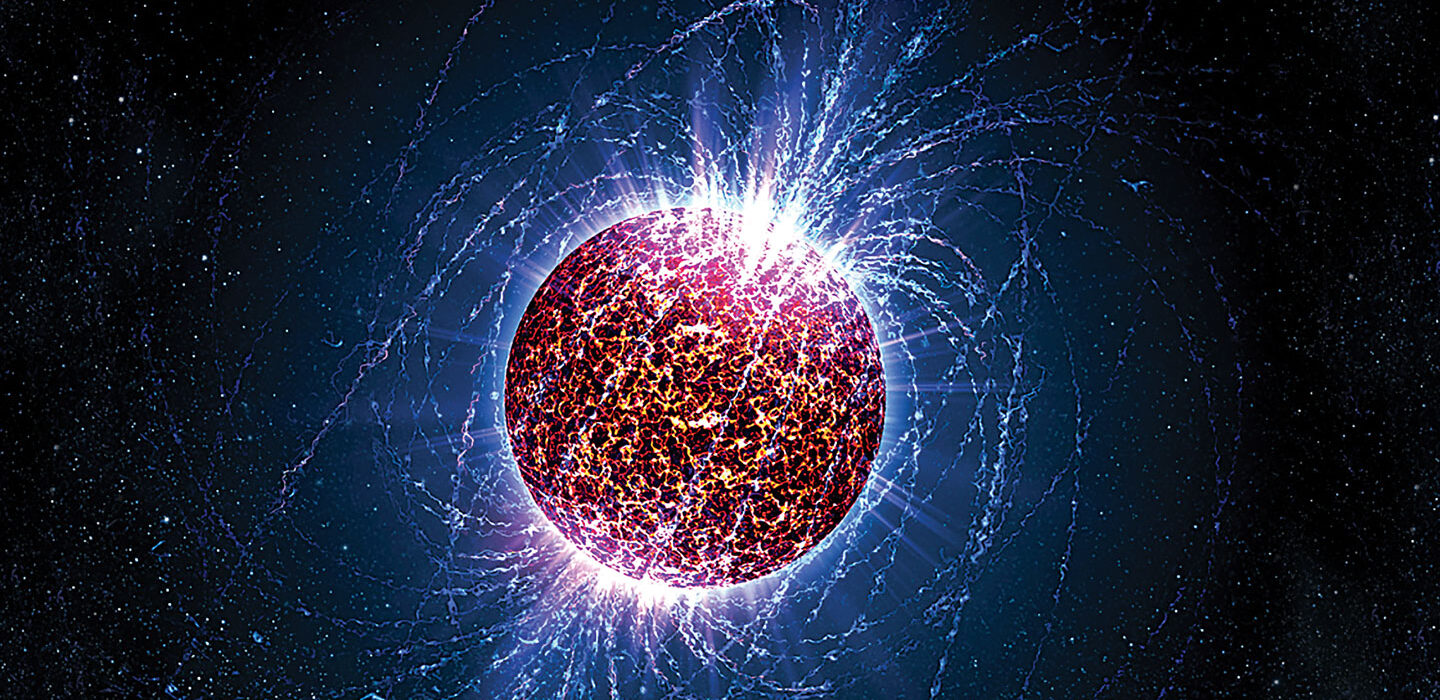
Neutron stars (one illustrated) squash the mass equivalent of the sun into the size of a city. Credit: Casey Reed/Penn State.
Albert Einstein’s mind reinvented space and time, foretelling a universe so bizarre and grand that it has challenged the limits of human imagination. An idea born in a Swiss patent office that evolved into a mature theory in Berlin set forth a radical new picture of the cosmos, rooted in a new, deeper understanding of gravity.
Out was Newton’s idea, which had reigned for nearly two centuries, of masses that appeared to tug on one another. Instead, Einstein presented space and time as a unified fabric distorted by mass and energy. Objects warp the fabric of spacetime like a weight resting on a trampoline, and the fabric’s curvature guides their movements. With this insight, gravity was explained.
Einstein presented his general theory of relativity at the end of 1915 in a series of lectures in Berlin. But it wasn’t until a solar eclipse in 1919 that everyone took notice. His theory predicted that a massive object — say, the sun — could distort spacetime nearby enough to bend light from its straight-line course. Distant stars would thus appear not exactly where expected. Photographs taken during the eclipse verified that the position shift matched Einstein’s prediction. “Lights all askew in the heavens; men of science more or less agog,” declared a New York Times headline.
Even a decade later, a story in Science News Letter, the predecessor of Science News, wrote of Riots to understand Einstein theory (SN: 2/1/30, p. 79). Apparently extra police had to be called in to control a crowd of 4,500 who “broke down iron gates and mauled each other” at the American Museum of Natural History in New York City to hear an explanation of general relativity.
By 1931, physicist Albert A. Michelson, the first American to win a Nobel Prize in the sciences, called the theory “a revolution in scientific thought unprecedented in the history of science.”
But for all the powers of divination we credit to Einstein today, he was a reluctant soothsayer. We now know that general relativity offered much more than Einstein was willing or able to see. “It was a profoundly different way of looking at the universe,” says astrophysicist David Spergel of the Simons Foundation’s Flatiron Institute in New York City, “and it had some wild implications that Einstein himself didn’t want to accept.” What’s more, says Spergel (a member of the Honorary Board of the Society for Science, publisher of Science News), “the wildest aspects of general relativity have all turned out to be true.”
What had been masquerading as a quiet, static, finite place is instead a dynamic, ever-expanding arena filled with its own riot of space-bending beasts. Galaxies congregate in superclusters on scales vastly greater than anything experts had considered before the 20th century. Within those galaxies reside not only stars and planets, but also a zoo of exotic objects illustrating general relativity’s propensity for weirdness, including neutron stars, which pack a fat star’s worth of mass into the size of a city, and black holes, which pervert spacetime so strongly that no light can escape. And when these behemoths collide, they shake spacetime, blasting out ginormous amounts of energy. Our cosmos is violent, evolving and filled with science fiction–like possibilities that actually come straight out of general relativity.
“General relativity opened up a huge stage of stuff for us to look at and try out and play with,” says astrophysicist Saul Perlmutter of the University of California, Berkeley.

He points to the idea that the universe changes dramatically over its lifetime — “the idea of a lifetime of a universe at all is a bizarre concept” — and the idea that the cosmos is expanding, plus the thought that it could collapse and come to an end, and even that there might be other universes. “You get to realize that the world could be much more interesting even than we already ever imagined it could possibly be.”
_______________________________________________________________________________________________________
An expanding picture
Einstein’s equations of general relativity were a wellspring from which our current view of the cosmos has flowed. That the theory continues to supply so many rich questions is part of what makes it “just incredible,” says David Spergel, an astrophysicist at the Simons Foundation’s Flatiron Institute in New York City. Over the last century, we’ve detected cosmic beasts that defy the imagination. We’ve also learned some crucial facts about our cosmos: The universe is expanding, and at an accelerating rate. The universe began with a bang 13.8 billion years ago. And mysterious forms of matter and energy are shaping the cosmos in unexpected and largely unknown ways. Read about some of the milestones in our expanding picture, including Vera Rubin’s contributions.
Dark Matter Background
Fritz Zwicky discovered Dark Matter in the 1930s when observing the movement of the Coma Cluster., Vera Rubin a Woman in STEM denied the Nobel, some 30 years later, did most of the work on Dark Matter.


In modern times, it was astronomer Fritz Zwicky, in the 1930s, who made the first observations of what we now call dark matter. His 1933 observations of the Coma Cluster of galaxies seemed to indicated it has a mass 500 times more than that previously calculated by Edwin Hubble. Furthermore, this extra mass seemed to be completely invisible. Although Zwicky’s observations were initially met with much skepticism, they were later confirmed by other groups of astronomers.
Thirty years later, astronomer Vera Rubin provided a huge piece of evidence for the existence of dark matter. She discovered that the centers of galaxies rotate at the same speed as their extremities, whereas, of course, they should rotate faster. Think of a vinyl LP on a record deck: its center rotates faster than its edge. That’s what logic dictates we should see in galaxies too. But we do not. The only way to explain this is if the whole galaxy is only the center of some much larger structure, as if it is only the label on the LP so to speak, causing the galaxy to have a consistent rotation speed from center to edge.
Vera Rubin, following Zwicky, postulated that the missing structure in galaxies is dark matter. Her ideas were met with much resistance from the astronomical community, but her observations have been confirmed and are seen today as pivotal proof of the existence of dark matter.



________________________________________________________________________________________________________
General relativity has become the foundation for today’s understanding of the cosmos. But the current picture is far from complete. Plenty of questions remain about mysterious matter and forces, about the beginnings and the end of the universe, about how the science of the big meshes with quantum mechanics, the science of the very small. Some astronomers believe a promising route to answering some of those unknowns is another of general relativity’s initially underappreciated features — the power of bent light to magnify features of the cosmos.
Today’s scientists continue to poke and prod at general relativity to find clues to what they might be missing. General relativity is now being tested to a level of precision previously impossible, says astrophysicist Priyamvada Natarajan of Yale University. “General relativity expanded our cosmic view, then gave us sharper focus on the cosmos, and then turned the tables on it and said, ‘now we can test it much more strongly.’ ” It’s this testing that will perhaps uncover problems with the theory that might point the way to a fuller picture.
And so, more than a century after general relativity debuted, there’s plenty left to foretell. The universe may turn out to be even wilder yet.
Ravenous beasts
Just over a century after Einstein unveiled general relativity, scientists obtained visual confirmation of one of its most impressive beasts. In 2019, a global network of telescopes revealed a mass warping spacetime with such fervor that nothing, not even light, could escape its snare. The Event Horizon Telescope released the first image of a black hole, at the center of galaxy M87 (SN: 4/27/19, p. 6).


“The power of an image is strong,” says Kazunori Akiyama, an astrophysicist at the MIT Haystack Observatory in Westford, Mass., who led one of the teams that created the image. “I somewhat expected that we might see something exotic,” Akiyama says. But after looking at the first image, “Oh my God,” he recalls thinking, “it’s just perfectly matching with our expectation of general relativity.”
For a long time, black holes were mere mathematical curiosities. Evidence that they actually reside out in space didn’t start coming in until the second half of the 20th century. It’s a common story in the annals of physics. An oddity in some theorist’s equation points to a previously unknown phenomenon, which kicks off a search for evidence. Once the data are attainable, and if physicists get a little lucky, the search gives way to discovery.
In the case of black holes, German physicist Karl Schwarzschild came up with a solution to Einstein’s equations near a single spherical mass, such as a planet or a star, in 1916, shortly after Einstein proposed general relativity. Schwarzschild’s math revealed how the curvature of spacetime would differ around stars of the same mass but increasingly smaller sizes — in other words, stars that were more and more compact. Out of the math came a limit to how small a mass could be squeezed. Then in the 1930s, J. Robert Oppenheimer and Hartland Snyder described what would happen if a massive star collapsing under the weight of its own gravity shrank past that critical size — today known as the “Schwarzschild radius” — reaching a point from which its light could never reach us. Still, Einstein — and most others — doubted that what we now call black holes were plausible in reality.
The term “black hole” first appeared in print in Science News Letter. It was in a 1964 story by Ann Ewing, who was covering a meeting in Cleveland of the American Association for the Advancement of Science (SN: 1/18/64, p. 39). That’s also about the time that hints in favor of the reality of black holes started coming in.
Just a few months later, Ewing reported the discovery of quasars — describing them in Science News Letter as “the most distant, brightest, most violent, heaviest and most puzzling sources of light and radio waves” (SN: 8/15/64, p. 106). Though not linked to black holes at the time, quasars hinted at some cosmic powerhouses needed to provide such energy. The use of X-ray astronomy in the 1960s revealed new features of the cosmos, including bright beacons that could come from a black hole scarfing down a companion star. And the motions of stars and gas clouds near the centers of galaxies pointed to something exceedingly dense lurking within.
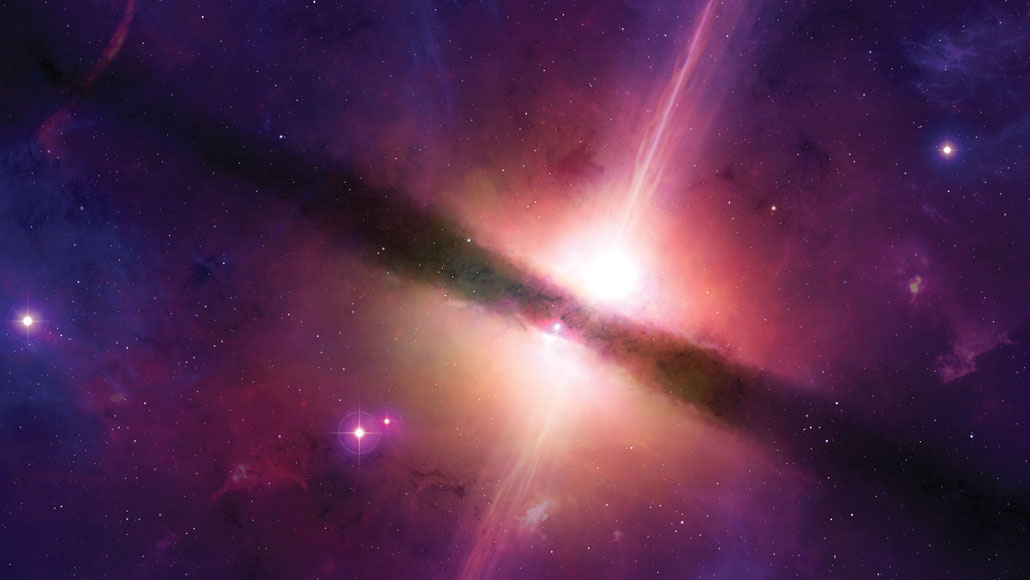
Quasars (one illustrated) are so bright that they can outshine their home galaxies. Though baffling when first discovered, these outbursts are powered by massive, feeding black holes. Credit: Mark Garlick/Science Source.
Black holes stand out among other cosmic beasts for how extreme they are. The largest are many billion times the mass of the sun, and when they rip a star apart, they can spit out particles with 200 trillion electron volts of energy. That’s some 30 times the energy of the protons that race around the world’s largest and most powerful particle accelerator, the Large Hadron Collider.

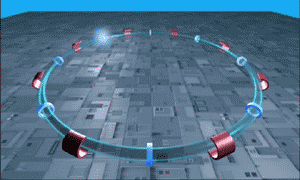
As evidence built into the 1990s and up to today, scientists realized these great beasts not only exist, but also help shape the cosmos. “These objects that general relativity predicted, that were mathematical curiosities, became real, then they were marginal. Now they’ve become central,” says Natarajan.
We now know supermassive black holes reside at the centers of most if not all galaxies, where they generate outflows of energy that affect how and where stars form. “At the center of the galaxy, they define everything,” she says.



Though visual confirmation is recent, it feels as though black holes have long been familiar. They are a go-to metaphor for any unknowable space, any deep abyss, any endeavor that consumes all our efforts while giving little in return.
Real black holes, of course, have given plenty back: answers about our cosmos plus new questions to ponder, wonder and entertainment for space fanatics, a lost album from Weezer, numerous episodes of Doctor Who, the Hollywood blockbuster Interstellar.
For physicist Nicolas Yunes of the University of Illinois at Urbana-Champaign, black holes and other cosmic behemoths continue to amaze. “Just thinking about the dimensions of these objects, how large they are, how heavy they are, how dense they are,” he says, “it’s really breathtaking.”
What does a black hole look like? [Updated] |
Science News.
Spacetime waves
When general relativity’s behemoths collide, they disrupt the cosmic fabric. Ripples in spacetime called gravitational waves emanate outward, a calling card of a tumultuous and most energetic tango.
Einstein’s math predicted such waves could be created, not only by gigantic collisions but also by explosions and other accelerating bodies. But for a long time, spotting any kind of spacetime ripple was a dream beyond measure. Only the most dramatic cosmic doings would create signals that were large enough for direct detection. Einstein, who called the waves “gravitationswellen”, was unaware that any such big events existed in the cosmos.
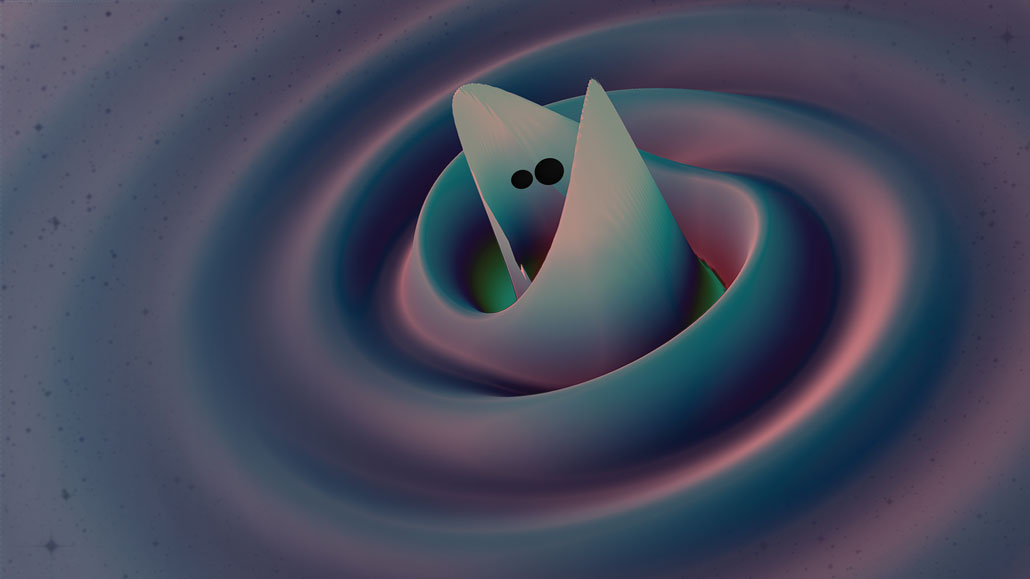
Gravitational waves ripple away from two black holes that orbit each other before merging (shown in this simulation). The merging black holes created a new black hole that’s much larger than those found in previous collisions. Credit: Deborah Ferguson, Karan Jani, Deirdre Shoemaker and Pablo Laguna/Georgia Tech, Maya Collaboration.
Beginning in the 1950s, when others were still arguing whether gravitational waves existed in reality, physicist Joseph Weber sunk his career into trying to detect them. After a decade-plus effort, he claimed detection in 1969, identifying an apparent signal perhaps from a supernova or from a newly discovered type of rapidly spinning star called a pulsar. In the few years after reporting the initial find, Science News published more than a dozen stories on what it began calling the “Weber problem” (SN: 6/21/69, p. 593). Study after study could not confirm the results. What’s more, no sources of the waves could be found. A 1973 headline read, “The deepening doubt about Weber’s waves” (SN: 5/26/73, p. 338).
Weber stuck by his claim until his death in 2000, but his waves were never verified. Nonetheless, scientists increasingly believed gravitational waves would be found. In 1974, radio astronomers Russell Hulse and Joseph Taylor spotted a neutron star orbiting a dense companion. Over the following years, the neutron star and its companion appeared to be getting closer together by the distance that would be expected if they were losing energy to gravitational waves. Scientists soon spoke not of the Weber problem, but of what equipment could possibly pick up the waves. “Now, although they have not yet seen, physicists believe,” Dietrick E. Thomsen wrote in Science News in 1984 (SN: 8/4/84, p. 76).
It was a different detection strategy, decades in the making, that would provide the needed sensitivity. The Advanced Laser Interferometry Gravitational-wave Observatory, or LIGO, which reported the first confirmed gravitational waves in 2016, relies on two detectors, one in Hanford, Wash., and one in Livingston, La. Each detector splits the beam of a powerful laser in two, with each beam traveling down one of the detector’s two arms. In the absence of gravitational waves, the two beams recombine and cancel each other out. But if gravitational waves stretch one arm of the detector while squeezing the other, the laser light no longer matches up.

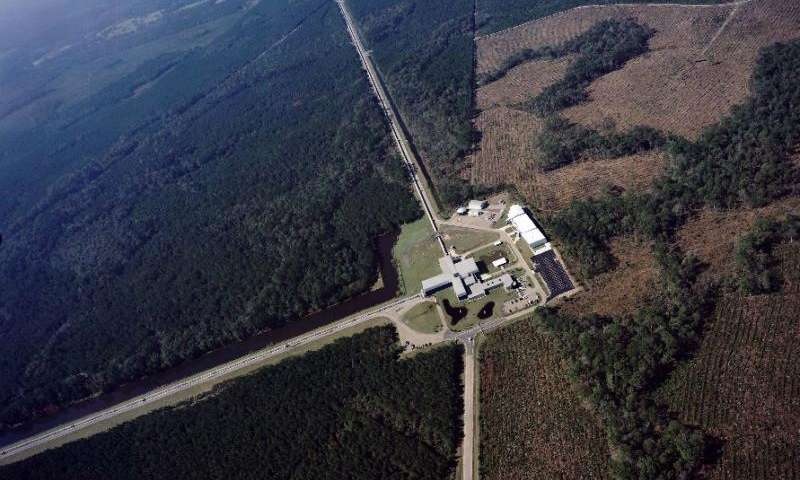



The machines are an incredible feat of engineering. Even spacetime ripples detected from colliding black holes might stretch an arm of the LIGO detector by as little as one ten-thousandth of the width of a proton.
When the first detection, from two colliding black holes, was announced, the discovery was heralded as the beginning of a new era in astronomy.
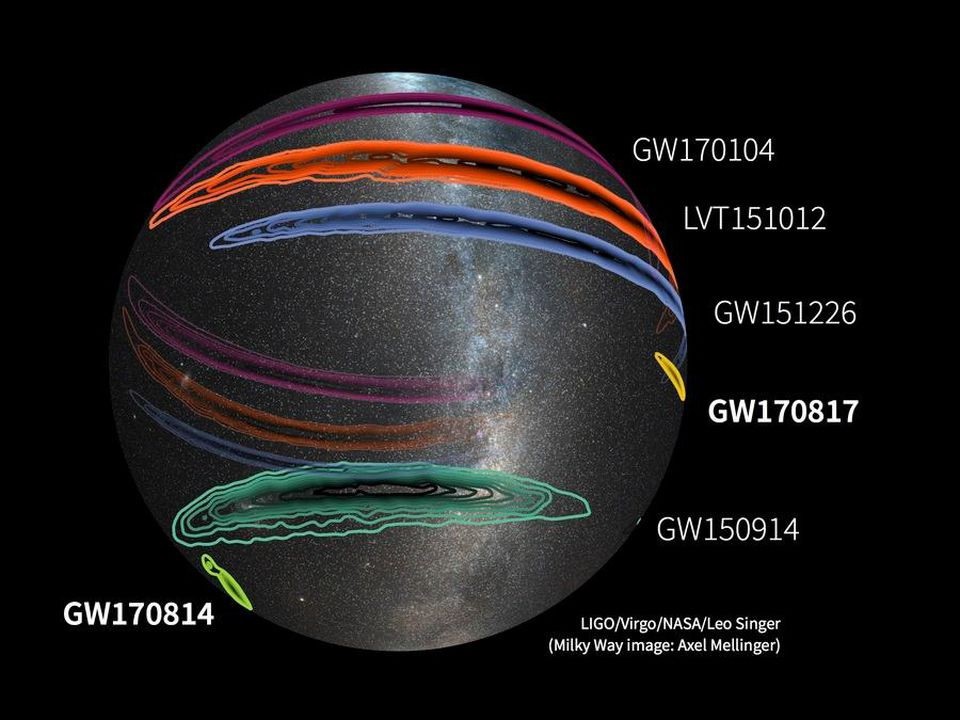
It was Science News’ story of the year in 2016, and such a big hit that the pioneers of the LIGO detector won the Nobel Prize in physics the following year.
Scientists with LIGO and another gravitational wave detector, Virgo, based in Italy, have by now logged dozens more detections (SN: 1/30/21, p. 30). Most of the waves have emanated from mergers of black holes, though a few events have featured neutron stars. Smashups so far have revealed the previously unknown birthplaces of some heavy elements and pointed to a bright jet of charged subatomic particles that could offer clues to mysterious flashes of high-energy light known as gamma-ray bursts. The waves also have revealed that midsize black holes, between 100 and 100,000 times the sun’s mass, do in fact exist — along with reconfirming that Einstein was right, at least so far.
Just five years in, some scientists are already eager for something even more exotic. In a Science News article about detecting black holes orbiting wormholes via gravitational waves, physicist Vítor Cardoso of Instituto Superior Técnico in Lisbon, Portugal, suggested a coming shift to more unusual phenomena: “We need to look for strange but exciting signals,” he said (SN: 8/29/20, p. 12).
Gravitational wave astronomy is truly only at its beginnings. Improved sensitivity at existing Earth-based detectors will turn up the volume on gravitational waves, allowing detections from less energetic and more distant sources. Future detectors, including the space-based LISA, planned for launch in the 2030s, will get around the troublesome noise that interferes when Earth’s surface shakes.
“Perhaps the most exciting thing would be to observe a small black hole falling into a big black hole, an extreme mass ratio inspiraling,” Yunes says. In such an event, the small black hole would zoom back and forth, back and forth, swirling in different directions as it followed wildly eccentric orbits, perhaps for years. That could offer the ultimate test of Einstein’s equations, revealing whether we truly understand how spacetime is warped in the extreme.
See the full article here .

five-ways-keep-your-child-safe-school-shootings
Please help promote STEM in your local schools.


